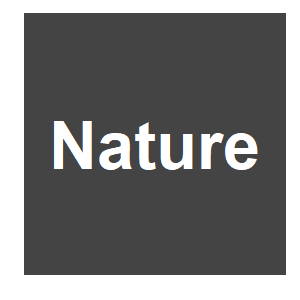
Keywords: selection

|
Selfish genetic elements and male fertilityR. L. Verspoor, T. A. R. Price and N. Wedell, Philosophical Transactions of the Royal Society B-Biological Sciences, 375:7. 2020.
Selfish genetic elements (SGEs) are diverse and near ubiquitous in Eukaryotes and can be potent drivers of evolution. Here, we discuss SGEs that specifically act on sperm to gain a transmission advantage to the next generation. The diverse SGEs that affect sperm often impose ... Keywords: culex-pipiens, cytoplasmic incompatibility, gene drive natural, populations, selection |

|
An X-linked meiotic drive allele has strong, recessive fitness costs in female Drosophila pseudoobscuraW. Larner, T. Price, L. Holman and N. Wedell, Proceedings of the Royal Society B-Biological Sciences, 286:9. 2019.
Selfish 'meiotic drive' alleles are transmitted to more than 50% of offspring, allowing them to rapidly invade populations even if they reduce the fitness of individuals carrying them. Theory predicts that drivers should either fix or go extinct, yet some drivers defy these ... Keywords: culex-pipiens, cytoplasmic incompatibility, gene drive natural, populations, selection |

|
Does meiotic drive alter male mate preference?S. R. Finnegan, L. Nitsche, M. Mondani, M. F. Camus, K. Fowler and A. Pomiankowski, Behavioral Ecology, 13:194-201. 2019.
Male mate preferences have been demonstrated across a range of species, including the Malaysian stalk-eyed fly, Teleopsis dalmanni. This species is subject to sex-ratio (SR), an X-linked male meiotic driver, which causes the dysfunction of Y-sperm and the production of all-female ... Keywords: culex-pipiens, cytoplasmic incompatibility, gene drive natural, populations, selection |

|
Sperm competition suppresses gene drive among experimentally evolving populations of house miceManser, AL, A. K.; Simmons, L. W.; Firman, R. C., Molecular Ecology, 26:5784-5792. 2017.
Drive genes are genetic elements that manipulate the 50% ratio of Mendelian inheritance in their own favour, allowing them to rapidly propagate through populations. The action of drive genes is often hidden, making detection and identification inherently difficult. Yet drive ... Keywords: culex-pipiens, cytoplasmic incompatibility, gene drive natural, populations, selection |

|
Meiotic drive changes sperm precedence patterns in house mice: potential for male alternative mating tactics?Sutter, AL, A. K., BMC Evolutionary Biology, 16:15. 2016.
Background: With female multiple mating (polyandry), male-male competition extends to after copulation (sperm competition). Males respond to this selective pressure through physiological, morphological and behavioural adaptations. Sperm competitiveness is commonly decreased in ... Keywords: culex-pipiens, cytoplasmic incompatibility, gene drive natural, populations, selection |

|
The Trojan Female Technique for pest control: a candidate mitochondrial mutation confers low male fertility across diverse nuclear backgrounds in Drosophila melanogasterD. K. Dowling, D. M. Tompkins and N. J. Gemmell, Evolutionary Applications, 8:8710880. 2015.
The Trojan Female Technique (TFT) was recently proposed as a prospective approach to biological pest control. However, applicability of the TFT relies on mitochondrial mutations whose male-sterilizing effects are general across nuclear genomic contexts. We test this assumption, ... Keywords: culex-pipiens, cytoplasmic incompatibility, gene drive natural, populations, selection |

|
Selfish genes in mosquitosC. F. Curtis, Nature, 357:450. 1992.
Hurst and coUeagues1.2 state that "within any population of [the mosquito] Culex pipiens there are two sorts of individual, those that bear/harbour Wolbachia [bacteria] and those that do not". But, according to Yen and Barr3, all wild-type C. pipiens appropriately examined ... Keywords: culex-pipiens, cytoplasmic incompatibility, gene drive natural, populations, selection |

Contact
David O’Brochta
Foundation for the
National Institutes of Health
geneconvenevi@fnih.org
RSS

